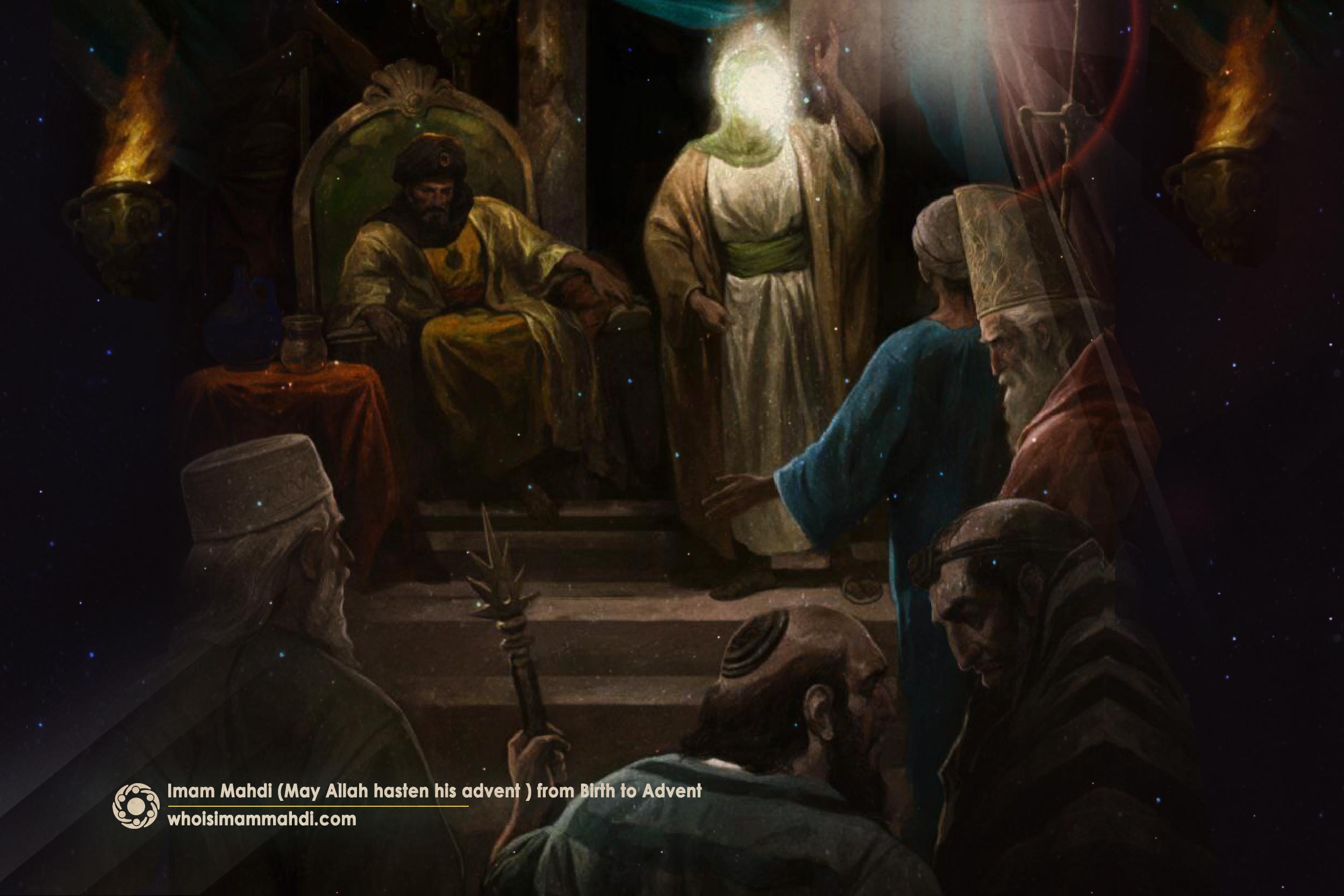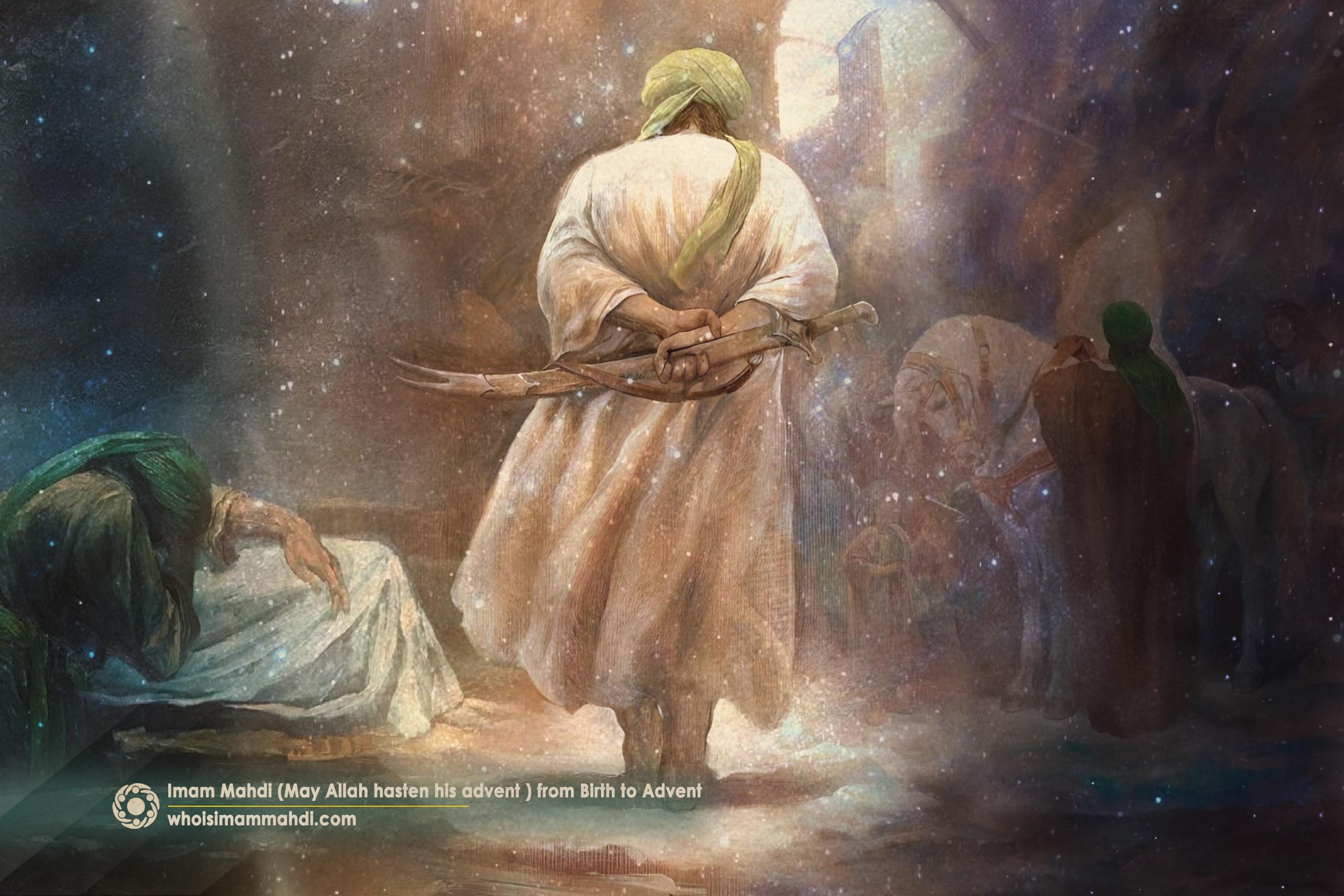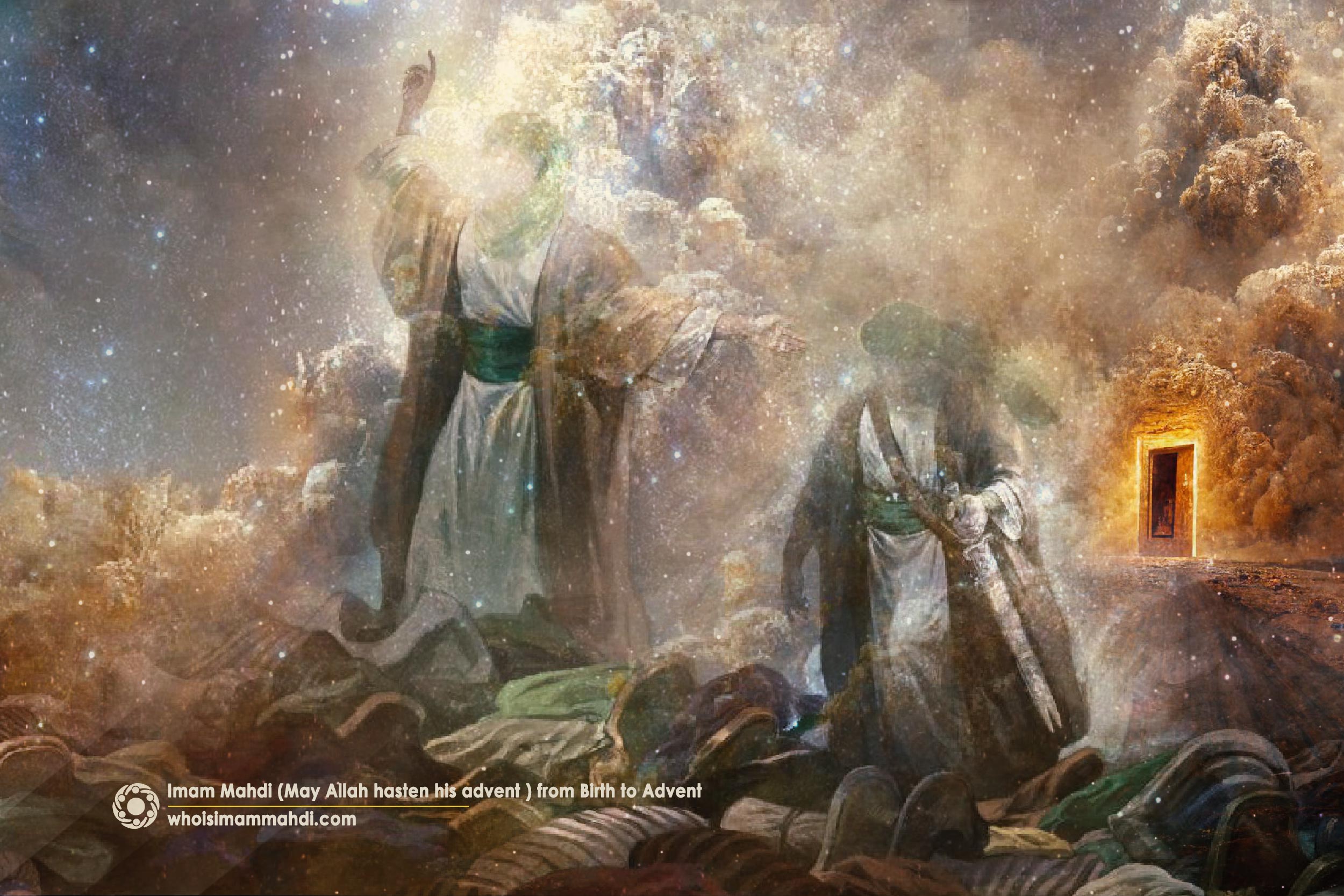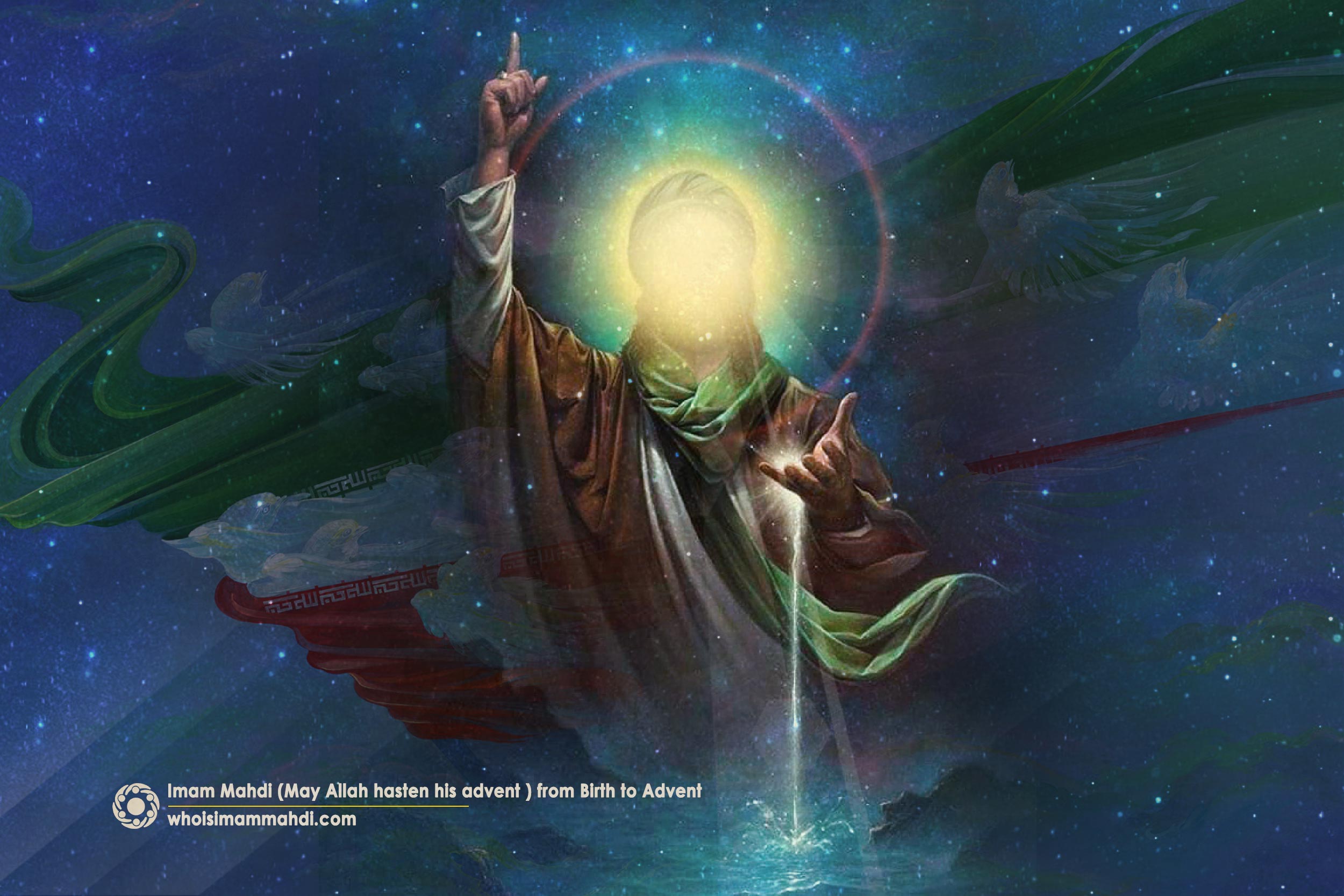An Overview of the Political Life of Imam Reza (PBUH): Four Main Actions During His Succession to Caliphate
Hazrat Ali ibn Musa (PBUH), the son of Imam Kazim (PBUH), is the eighth Imam of the Twelver Shia. He is famously known as Imam Reza, and his holy shrine is located in Mashhad, iran. His period of Imamate lasted for approximately twenty years. The life of Imam Reza and his era of Imamate coincided with the caliphates of Harun al-Rashid, Amin al-Rashid, and Ma’mun al-Rashid.
After the martyrdom of Imam Kazim (PBUH) and the beginning of Imam Reza’s Imamate, numerous challenges arose. Most of these challenges came from the delegates of Imam Kazim (PBUH) within the network of delegation.[1] After the martyrdom of Imam Kazim (PBUH), it seemed as if the tide had turned, and the ideals and instructions of Imam Kazim (PBUH) were forgotten. Various sects, such as the Waqifites,[2] emerged and denied the leadership of Imam Reza (PBUH). The Imam consistently endeavored to confront them through various methods and to neutralize their seditions.
Following Harun’s death, the caliphate passed to his younger son, Amin. Consequently, Ma’mun, Amin’s older brother, killed Amin and he himself became the caliph of Muslims.[3] For various reasons, Ma’mun decided to assign the succession to the caliphate to Imam Reza (PBUH). The Imam accepted this covenant to preserve the lineage of Imamate. The succession of Imam Reza[4] was a significant event during his Imamate and life, sparking considerable discussion. Ma’mun aimed to create division among the Alawis,[5] undermine the authority of the Imam, and eliminate any threat posed by the Imam to his government. The Imam made optimal use of this situation, transforming this perilous period into a time of great glory, power, and dignity for the Shia.
The Imamate era of eleven Imams of the Shia lasted around 250 years. Each member of the Ahl al-Bayt-the Household of Prophet Muhammad (PBUT)- adopted a method of struggle and jihad appropriate for his time, guiding and enlightening people in their unique ways. The Ahl al-Bayt (PBUT) had to preserve and strengthen the Shia school and prepare it for the era of the twelfth Imam (May Allah hasten his advent) and the establishment of a global just government by him. The various battles fought by Imam Ali (PBUH) against rebellious individuals, the peace treaty of Imam Hassan (PBUH), the uprising of Imam Hussain (PBUH), the prayers of Imam Sajjad (PBUH), the flourishing of knowledge by Imam Baqir (PBUH), and the dissemination of knowledge along with the covert network of delegation established by Imam Sadiq and Imam Kazim (PBUT) were all prerequisites necessary for preserving the Shia school of thought and fortifying its foundations. The unified goal of the infallible Imams (PBUT) was to empower, strengthen, and nurture Shia Muslims, with each Imam dedicating years to this purpose.
The life of Imam Reza (PBUH) differed fundamentally from that of other Imams (PBUT) in that he managed to gain a governmental platform from which he could openly speak about the status of Imamate and the Imam. This allowed people to experience the sweet taste of being ruled by an infallible Imam.
The Succession of Imam Reza (PBUH)
Although Ma’mun was a descendant of Harun al-Rashid, he did not enjoy much respect among Arabs because his mother was an Iranian slave.[6] He was an intelligent, knowledgeable, and power-hungry individual.[7] After killing his brother, Amin, who had inherited their father’s throne, Ma’mun became the caliph of Muslims. Subsequently, he decided, for various reasons, to make Imam Reza (PBUH) his successor:
– He aimed to intimidate the Abbasids regarding the rise of the Alawis to power, thereby legitimizing his own rule, which even the Abbasids considered usurped.
– The news of Imam Reza’s succession would easily divert public attention from Amin’s assassination.
– Ma’mun intended to create discord among the Alawis and Abbasids, using the acceptance of a governmental position by the Imam as a tool for radical Alawi leaders to claim that Ali ibn Musa (PBUH) had been deceived by the desire for power.
– He sought to win the support of both the Alawis and Iranians who loved the Ahl al-Bayt (PBUT) to prevent any potential uprisings against him.
– His goal was to belittle the status of Imamate and portray it as insignificant.
Maa’mun initially asked Imam Reza (PBUH) to accept the caliphate, but the Imam rejected. Then, he offered the Imam the succession to caliphate. The Imam rejected both proposals, but Maa’mun threatened him with death; in reality, if the Imam had refused, not only would his own life have been in danger, but also the lives of the Shia. During a time when atheistic and anti-religious ideologies were widespread, any action taken by the Imam that could lead to his death might have caused the Shia to go astray. At that time, the presence of the Imam (PBUH) was essential for the well-being of Shia beliefs. However, in various instances regarding the issue of succession, the Imam stated: “God knows of my aversion to the matter of succession. I chose succession over death.”[8] Thus, the Imam reluctantly accepted the succession under specific conditions.[9]
Maa’mun’s offer of succession was a carefully planned trap, designed to control Imam Reza and limit his choices. Worldly desires and lust for power and wealth had no place in this acceptance; the Imam was aware how his relationship with Maa’mun would end; he knew that, ultimately, he would be martyred by Maa’mun.
Actions of Imam Reza (PBUH) During His Imamate
Although the notion of succession posed a significant threat to the credibility of the Imam and the continuity of the Shia, Imam Reza PBUH) turned this threat into an opportunity. His life and actions transformed the history of the Shia into a different era. Some of his important actions include:
Restoring the Social Credibility of the Shia
During the lifetime of Imam Reza (PBUH), no other Imam faced conditions similar to his. The previous Imams were often confined and restricted by the government, and people’s connection with them was usually impossible; they were not allowed to interfere in governmental affairs. Consequently, the Shia were often oppressed and marginalized, hiding their faith. Despite numerous efforts, none of the previous Imams, except for Imam Reza (PBUH), had the opportunity to elevate the dignity, respect, and status of the Shia in society. Before Imam Reza’s time, Shias were considered impure apostates and were derogatorily referred to as “Rafidis,”[10] but during this era, thanks to the efforts of the Imam, Shi’ism gained significant social respect and credibility. Shias achieved such independence that their beliefs were articulated from the main platform through the words of the heir to the caliphate, restoring their honor and dignity.[11] What the seven previous Imams had worked towards for years came to fruition during Imam Reza’s (PBUH) lifetime. People experienced the sweetness of living under the guidance of an infallible Imam and became increasingly interested in Shia thought. The public’s inclination towards the leadership of an infallible expert intensified, and they grew disillusioned with tyrannical governments. Although Maa’mun intended to distract and immobilize the Imam with the ruse of succession, Imam Reza (PBUH) managed to use this opportunity to usher in a period of maturity for Shi’ism.
Global Debates of Imam Reza (PBUH)
Maa’mun, who aimed to eliminate Imam Reza (PBUH) with the ruse of the caliphate, soon realized his mistake and found himself compelled to neutralize the threat posed by the Imam’s fame and power. He decided to hold debates at the Bayt al-Hikmah,[12] believing he could defeat the Imam and undermine his authority. Additionally, Maa’mun intended to distract the Imam with scholarly pursuits and debates, keeping him away from political affairs, while also diverting the attention of officials and scholars from the government’s corruptions. He hoped that the Muslim community would be unified under the Imam’s eloquence. Maa’mun organized many debates in which Imam Reza (PBUH) participated, presenting various misconceptions[13] in an attempt to undermine the Imam.
However, the outcome of these events turned out to be contrary to Maa’mun’s expectations. The Imam skillfully engaged in discussions with prominent figures from different religions, sects, and nationalities, effectively promoting the concepts of Imamate and guardianship. He spoke to each faith in their own language and provided arguments matched to their beliefs.[14] The reputation of the Imam’s knowledge and wisdom spread far and wide, attracting individuals from various thoughts, beliefs, religions, and sects to attend his debates[15] and ask their questions.
Defending the Violated Rights of the Infallible Imams (PBUT) and Reviving the Event of Ghadir
After Prophet Muhammad (PBUH), the caliphs of Islam from both the Umayyad and Abbasid dynasties created an atmosphere where discussing the event of Ghadir was forbidden. They did not want people to remember Ghadir, fearing it would remind them of how they usurped power and committed injustices against Imam Ali and his descendants (PBUT). The last official celebration of Ghadir dated back to the caliphate of Imam Ali (PBUH). During his caliphate, Imam Reza (PBUH) officially held a Ghadir celebration and established it as a tradition.[16]
Imam Reza’s (PBUH) life as the successor to the Caliph marked a renewed expression of the truths of Ghadir. In this period, he openly spoke about the status of the infallible Imams and their rights. News of the Imam’s arrival in Iran spread among the people, attracting tens of thousands of scholars and hadith narrators who were eager to learn directly from the Prophet’s son (PBUH). While sources differ in the number of hadith scribes, a commonly cited figure is twenty thousand.[17] With keen situational awareness, Imam Reza (PBUH) decided to deliver a hadith known as “Silsilat al-Dhahab”[18] in this gathering of hadith experts. In this atmosphere reminiscent of Ghadir, he declared that understanding Imamate was essential for attaining monotheism; he asserted that it was impossible for anyone to reach true monotheism without belief in and adherence to the Imamate of Imam Ali (PBUH) and his descendants (PBUT). In this pivotal moment and location, he began promoting Ghadir and clarifying the status of Imamate in public view.
During that era, people’s understanding of the concept of an Imam had diminished to the point where they considered only the reigning ruler as an Imam—even if that ruler was a despot like Yazid or Harun. Imam Reza (PBUH) publicly defined the characteristics of a rightful Imam for society. This effort helped people recognize contradictions and grow disillusioned with tyrannical rulers.
The Role of Imam Reza (PBUH) in Strengthening the Shia Network
Our goal in examining the political life of Imam Reza (PBUH) is to understand his methods for confronting countercultures. Certainly, if we can extract these methods from his conduct, we can use them as excellent models in organizing a new Islamic civilization. We have discussed his role as the successor to the Caliph and how he strengthened the Imamate during this period. However, a topic that has received less attention is his approach to the network of delegation following the martyrdom of Imam Kazim (PBUH). The confrontation between Imam Reza (PBUH) and the delegates who had deviated from their purpose stands out as one of his most significant actions, yet it has been less explored.
The Concept of the Network of Delegation
One of the strongest management programs of the Ahl al-Bayt (PBUT) was a network known as the “Network of Delegation.” This organization was formed to address two major challenges: the geographical dispersion of Shias and the management of various affairs of the Shia community. Given the threats and pressures exerted by both the Umayyad and Abbasid dynasties, conditions were such that people could not easily communicate with most Imams (PBUT), necessitating reliable and righteous delegates who could connect the people with the Imam. The network of delegation was an organized structure headed by the infallible Imam of each era, with delegates or deputies forming its body. These deputies represented the Imam in various Shia-populated regions. This organization operated according to its own set of programs and guidelines, all of which were carefully overseen by the Imam.
The network of delegation held several important roles: it served as a link between the Imam and the people, managed finances and collected religious dues, provided scholarly guidance and answered religious questions, confronted deviations and seditions, and played a political role in preparing the society for the period of occultation and separation from the Imam.
Repairing the Defective Network of Delegation After the Martyrdom of Imam Kazim (PBUH)
Although the network of delegation had existed since the time of Imam Ali (PBUH), it truly flourished during the eras of Imam Baqir and Imam Sadiq (PBUT).[19] During Imam Kazim’s (PBUH) time, it took on a more serious form due to challenging circumstances. Unfortunately, some of Imam Kazim’s (PBUH) special delegates deviated from the path of truth after his martyrdom, creating new sects, misappropriating religious dues, and denying the Imamate of Imam Reza (PBUH).[20] The era of Imam Reza (PBUH) was filled with various Shia sects. The Waqifites, Ghulat,[21] Zaydis,[22] and Ismailis posed significant challenges for the Imam. The Ghulat during this period preferred to promote the teachings of earlier Ghulat leaders. The Zaydis focused their efforts on military issues, organizing widespread uprisings against Ma’mun.
The most troublesome sect for Imam Reza (PBUH) was the Waqifites, who emerged after Imam Kazim’s (PBUH) martyrdom. The Waqifites stopped recognizing any Imam after Imam Kazim (PBUH). Some believed that Imam Kazim (PBUH) was the Mahdi (AJ) who had not died but entered the state of occultation. Others claimed that he had died, was resurrected, and was now hidden away, while some asserted that he would come back to life at the time of his uprising and claimed that was the reason he is called Qa’im (the one who will rise up).[23] The leaders of the Waqifites were prominent Shia scholars whose misunderstandings led many astray.[24] A significant portion of Shia narrative heritage was in their hands, which could be manipulated or used ambiguously. The weakness and deviation of these leaders dealt a severe blow to the network of delegation, leaving it in a state of vulnerability for some time. Moreover, they were respected figures who introduced distorted beliefs into the concept of Mahdism, targeting a crucial aspect of the Shia belief. Imam Reza (PBUH) strongly confronted this group and took decisive action against them.
Imam Reza (PBUH) had to not only repair the severe blow inflicted on the structure of the network of delegation after the assassination of Imam Kazim (PBUH) but also rebuild and strengthen its foundations. He needed to pass this organization down to the infallible Imams after him with greater accuracy and integrity.
Imam Reza (PBUH) adopted an invasive and defensive approach. Initially, he wrote letters to the misguided delegates; apart from declaring his Imamate, he requested them to return the usurped properties. He then responded to the doubts and misconceptions raised by these leaders of sedition, exposing their true nature to people and revealing the truth. Ultimately, he ordered an economic and social boycott of the Waqifites and prohibited their followers from any social interaction, even publicly cursing and condemning them. Through these strategies, he managed to restore the status of the network of delegation and preserve the dignity of this organization.[25]
Strengthening the Organization by Imam Reza (PBUH)
All the twelve infallible Imams are like a single light and one unified being. Just as an individual behaves according to the circumstances and necessities of different stages in life, each of these twelve infallibles, who are one human entity, makes decisions appropriate to their respective times. Their goal is unified, and they all strive to pave the way toward that objective, of course in manners suitable to their own eras.
As mentioned, due to the atmosphere of danger and oppression during the times of the previous Imams, and the inability of people to connect with them, there was a clear need for a covert network. In the time of Imam Reza (PBUH), people could openly interact with him, attend his lectures, hear about his position and rights, and understand the truths of religion and Shia beliefs; thus, there was less need for a secretive network. The aim of the Imams was to empower and strengthen the Shia, whether through secrecy and taqiyya[26] or openly in public. Imam Reza (PBUH) carried out this work openly according to the demands of his time.
Although the network of delegation during this period differed somewhat from its earlier form and was not exactly the same, Imam Reza (PBUH) was simultaneously engaged in repairing and nurturing the fallen networks, which was a very important, challenging, and fateful task. Through Imam Reza’s (PBUH) efforts, a powerful and expanded Shia community, along with a purified network of delegation, was passed down to Imam Jawad (PBUH). The Imams inherited from Imam Reza (PBUH) an extraordinary power that fortified this network and prepared people for the period of the twelfth Imam’s occultation.
[1]. Muhammad Al-Shahrastani, Al-Mihal Wa’L-Nihal. Dar Sader, 1842, vol. 1, p. 169, vol. 8, p. 389.
[2]. Sayyid Muhammad Najafi Yazdi, Story of the Sun: A Look at Imam al-Ridha Life, trans. Ahmad Rezwani. Astan Quds Razavi, p. 43.
[3]. Al-Kutubī, Uyu’n al-Tawa’rikh, vol. 3, p. 211.
[4]. Baqir Sharif al-Qurashi, The life of Imam ‘Ali Bin Musa al-Ridha’, trans. Jasim al-Rasheed. Qom: Ansariyan Publications, p. 605
[5]. The term “Alawi” primarily refers to those who are associated with Ali ibn Abi Talib, the first Imam of the Shia, and throughout history, it has been used to describe his followers.
[6]. Al-Yaqubi, Tarikh al-Ya’qubi. Dar Sader, 2010, vol. 2, p. 444.
[7]. Al-Qurashi, The life of Imam ‘Ali Bin Musa al-Ridha’, p. 557.
[8]. Al-Qurashi, The life of Imam ‘Ali Bin Musa al-Ridha’, p. 607
[9]. Ibid., p. 608.
[10]. Dr. Muhammad al-Tijani al-Samawi, The Shiah Are the Real Ahlul-Sunnah, trans. Yasin T. Al-Jibouri. Pyam-e-Aman, 2014, pp. 17-20.
[11]. Ali Khamenei, A 250-Year-Old Person. trans. The Ahl al-Bayt (as) World Assembly, 2014, pp. 334-337.
[12]. A library from the era of Harun al-Rashid, which became a place for holding debates during Ma’mun’s reign.
[13]. Al-Qurashi, The life of Imam ‘Ali Bin Musa al-Ridha’, p. 84.
[14]. Sayyid Muhammad Najafi Yazdi, Story of the Sun: A Look at Imam al-Ridha Life, p. 22.
[15]. Al-Qurashi, The life of Imam ‘Ali Bin Musa al-Ridha’, p. 84.
[16]. Al-Hurr al-Aamili, Wasa’il al-Shia, 2008, Qom, vol. 10, p. 444
[17]. Abd Allah al-Samhudi, Jawahir al-iqdayn fi fadl al-sharafayn, Matba’at al-‘Ani, 1984, p. 344
[18]. Ahmad Ahmadi Birjandi, The Fourteen Luminaries of Islam, trans. Ahmad Rezwani. Islamic Research Foundation Astan-e Quds Razavi, p. 97.
[19]. Seyed Ali Khamenei, A 250 Years Old Person ,2015 , p. 281.
[20] Al-Saduq, Uyun Akhbar Ar-Ridha, trans. Dr. Ali Peiravi. Qom: Ansariyan Publications, 2006, vol. 1, p. 130.
[21]. Sayyid Muhammad Najafi Yazdi, Story of the Sun: A Look at Imam al-Ridha Life, trans. Ahmad Rezwani. Mashhad: Astan Quds Razavi, 2017, pp. 42-45.
[22]. Baqir Sharif al-Qurashi, The Life of Imam Musa Bin Ja’far Al-Kazim, trans. Jasim al-Rasheed. Qom: Ansariyan Publications, p. 431.
[23]. Al-Shahrastani, Al-Mihal Wa’L-Nihal, Dar Sader, 1842, vol. 1, p. 169.
[24]. Al-Hasan b. Dawud al-Hilli, Kitab al-Rijal, p. 286.
[25]. Sayyid Mundhir Hakim and Sayyid Shahab al-Din Husayni, The life of Imam al-Rida, trans. The Islamic Foundation (London). ABWA Publishing and Printing Center, 2013, pp. 110-111; Sayyid Muhammad Najafi Yazdi, Story of the Sun: A Look at Imam al-Ridha Life, trans. Ahmad Rezwani, p. 64-69.
[26]. The practice of concealing one’s belief and foregoing ordinary religious duties when under threat of death or injury






































































